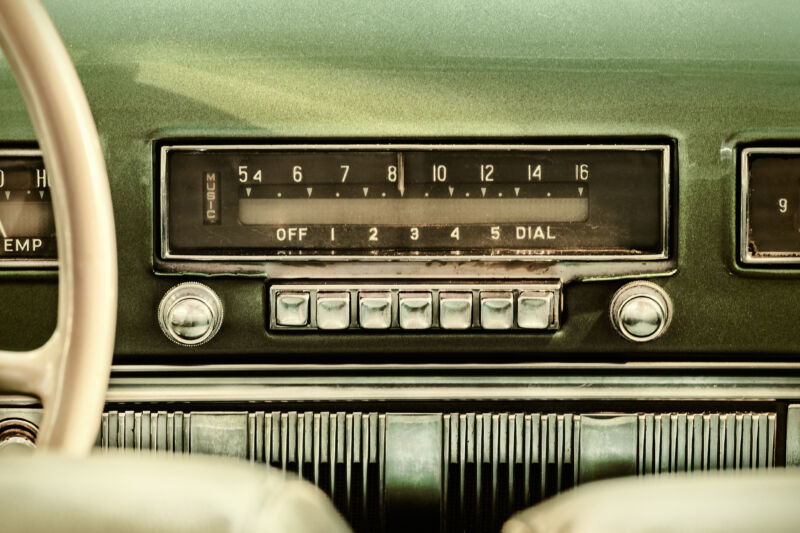
The fight over the future of AM radio got a little more heated this week as organizations representing the auto and technology industries told Congress that its plan to mandate this mode of radio wave reception is poorly conceived and will hinder progress.
AM radio has seen almost every other in-car entertainment option come and go—vinyl, 8-tracks, cassettes, CDs—and it might predate just about everything other than playing "I Spy," but time is catching up with this old broadcast technology. It is starting to get left behind as new models—many of which are electric vehicles—drive off into the sunset, streaming their audio instead of modulating its amplitude.
When we reported on the news that AM would be absent from the 2024 Ford Mustang, we noted that some elected officials in Congress were not cool with retiring this kind of radio. Now some of them have gone a step further and introduced a bill—the "AM Radio for Every Vehicle Act"—that would require every new vehicle to include an AM radio receiver as standard equipment at no extra cost to the car buyer.
"I would think that if Elon Musk has enough money to buy Twitter and send rockets to space, he can afford to include AM radio in his Teslas. Instead, Elon Musk and Tesla and other car manufacturers are putting public safety and emergency response at risk," said Representative Josh Gottheimer (D-N.J.), one of the co-sponsors of the legislation.
"As more and more Americans adopt electric vehicles, we must ensure that they are equipped with AM radio. AM radio is—and will remain—an essential communications channel for emergency alerts and for disseminating news and other important information to residents of our district and communities across our country. I am proud to co-lead this bipartisan legislation which would ensure that EVs continue to be equipped with this basic but critical capability," said Rep. Bob Menendez (D-N.J.), another co-sponsor.
The proposed new law also found support from the Federal Communications Commission and the radio broadcasting industry.
But the industries responsible for actually implementing this requirement are not nearly as enamored. Yesterday, the Zero Emission Transportation Association, the Alliance for Automotive Innovation, the Consumer Technology Association, and TechNet sent a letter to the bill's 11 co-sponsors in the House of Representatives and the Senate to point out how much of a mistake it would be.
While AM radio remains popular for local sports broadcasts and talk radio, the authors of the proposed legislation frame their act in terms of emergency alerts. That might have made sense back in the days of Marconi and Bell, but we're living in the 21st century with more than one way to broadcast alerts. What's more, for a radio alert to actually work, it has to be turned on and tuned to the right wavelength.
As the letter from the trade groups notes, 97 percent of Americans have a cellphone, which is already designed to receive Wireless Emergency Alerts, and these alerts can be received even if the cellular network is unable to send calls or other data.
"Unlike radio alerts, they can also contain an embedded hyperlink to guide the recipient to helpful information within seconds of receiving the alert; given that 85% of Americans with a cell phone own a smartphone, the vast majority of people receiving an alert can take advantage of this benefit," the letter points out.
Perhaps if this bill becomes law, its authors will follow up with a requirement for all pedestrians to carry an AM radio at all times as well, just in case.
Promoted Comments